16 Types of Peppers – Pepper Varieties
Best Pepper Varieties to Grow at Home
Peppers come in all sizes, shapes, and colors, ranging from sweet to fiery hot. Learn about the different types of peppers, and then plant a few varieties to spice up your garden. Can’t decide which ones to add? This article shares over 15 of the best pepper varieties to grow at home.
Article Index
- Mini Bell Pepper
- Bell Pepper
- Banana Pepper
- Carmen
- Pepperoncini
- Anaheim
- Poblano
- Hatch
- Jalepeño
- Fresno
- Jaloro
- Serrano
- Thai
- Habanero
- Bhut Jolokia
- Chiltepin
- Which peppers are considered the hottest in the world?
- How do I know when peppers are ripe and ready to harvest?
How hot are these pepper varieties?
This post about pepper varieties begins with the sweetest at #1 – no heat at all – and ends at #15 with the hottest pepper I’ve grown in my own garden, a former world record holder for the hottest pepper.
A pepper’s heat is often compared with the heat of a jalapeño – “it’s hotter than a jalapeño” or “it’s not as hot as a jalapeño”. Jalapeños come in on this list at #9. The Scoville scale is used to measure how hot peppers are.
Scoville heat units (SHU) measure the concentration of capsaicinoids, a chemical compound responsible for the spicy flavor in peppers and other foods. The jalapeño ranks between 2,500 and 8,000 SHU on the Scoville scale. This means a pepper must be at least eight times hotter than the jalapeño to be considered much spicier.
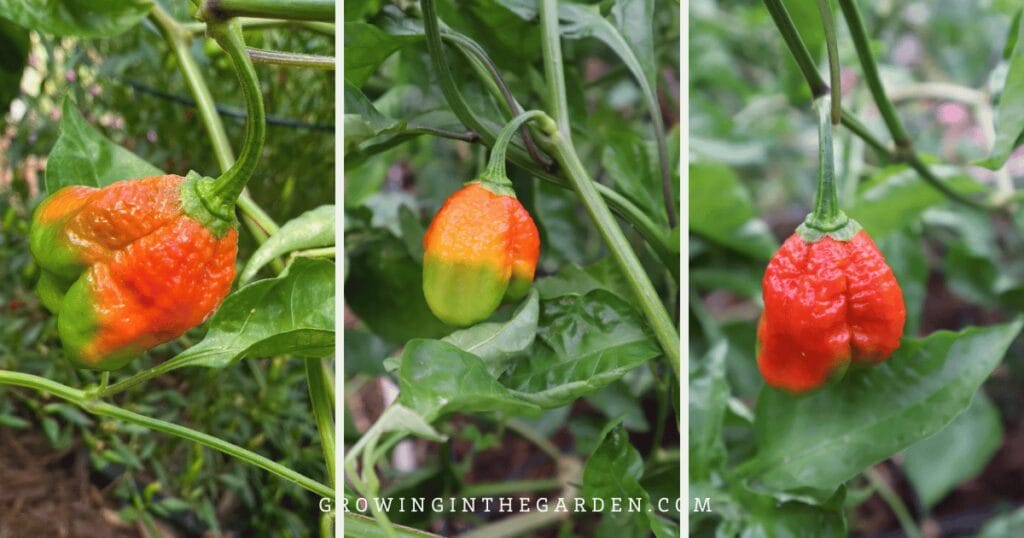
The hottest peppers on the Scoville scale are the Trinidad Moruga Scorpion and Carolina Reaper, reaching over two million SHU. That means these peppers are more than 250 times hotter than the jalapeño! However, some peppers have been tested that have reached over 2.2 million SHU, making them potentially even hotter than the Trinidad Moruga Scorpion and Carolina Reaper! For reference, police-grade pepper spray is about 500,000 to 5.3 million SHU.
Of course, it’s not just the Scoville scale that measures spiciness in peppers. Different peppers contain different types of capsaicinoids, which is the chemical compound responsible for the heat. The levels of capsaicinoids in a pepper will determine how hot it is, regardless of its Scoville rating.
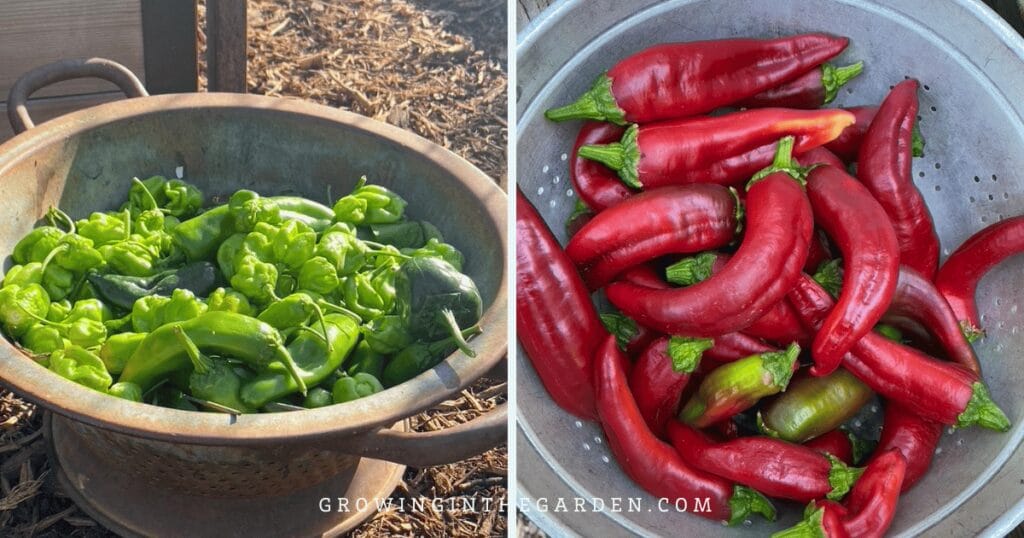
Which pepper variety should you choose?
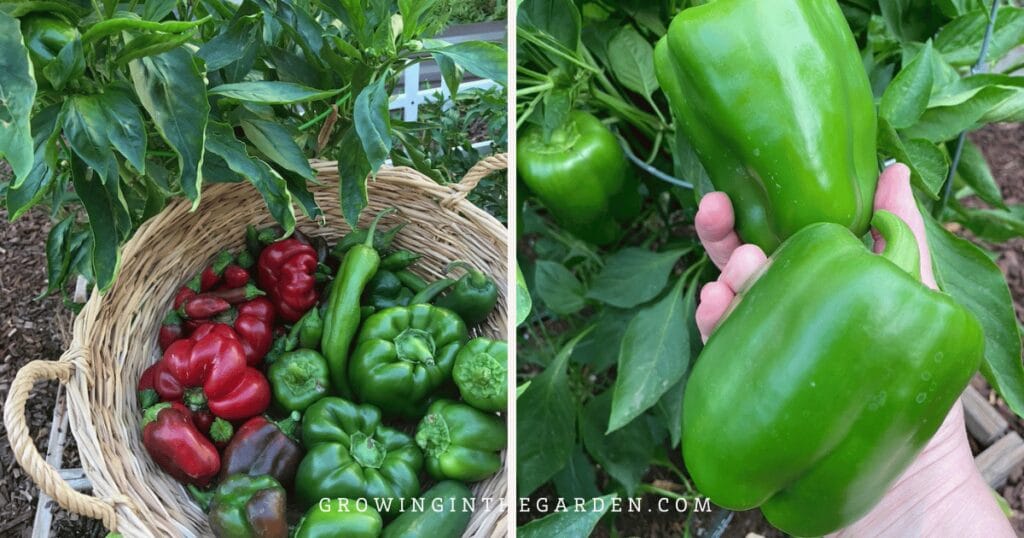
Want to grow peppers in your garden? My advice is to pick a sweet pepper, a hot pepper, and maybe one or two in between. Adding peppers to your garden is a great way to give variety and flavor to the other vegetables you harvest from your garden.
Peppers are easy to grow and maintain, making them the perfect choice for a beginner gardener.
If you are looking for seeds for the varieties of peppers listed, click on the link attached to each pepper’s name and it will take you to trusted seed sources. Want some tips for growing peppers? This article explains how to grow peppers in your garden.
#1: mini bell pepper
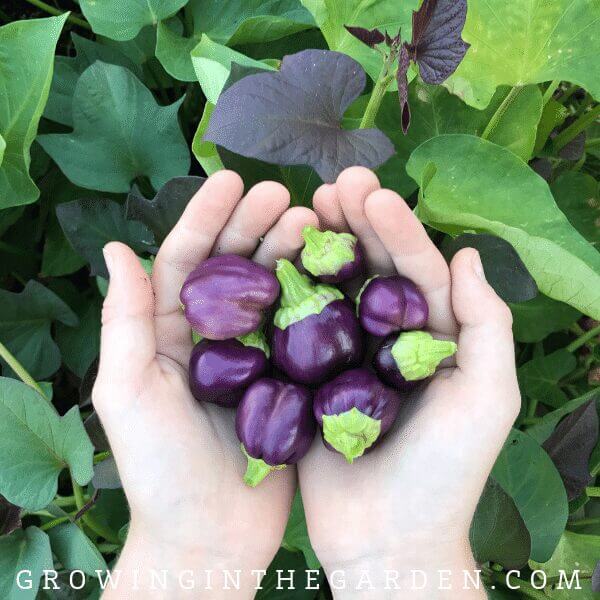
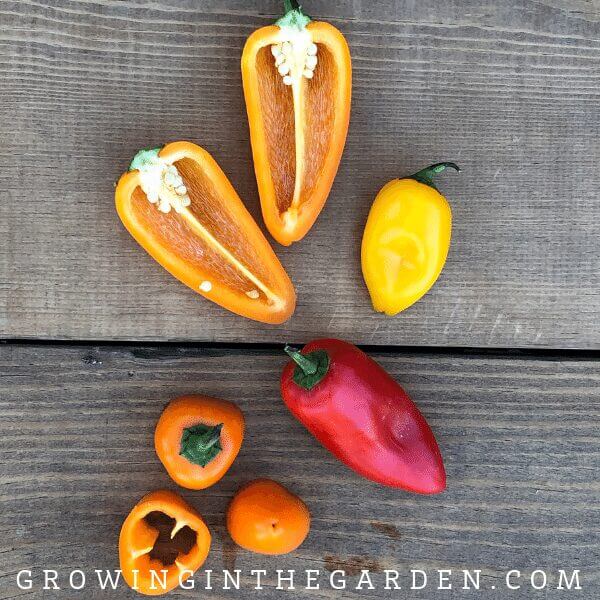
What does a mini bell pepper look like?
The colors of mini bell peppers cover the rainbow, ranging from green, red, yellow, orange and even purple, depending on the variety. Mini bell peppers are about 2 or 3 inches long.
What does a mini bell pepper taste like?
Besides looking different, the different colors of bell peppers actually have differences in flavor. Green bell peppers are the least ripe or sweet. As the bell pepper ripens from green, to red, then yellow, and finally orange, the sweetness and flavor increases. The flavor of a purple pepper can be compared to a green pepper. If left on the plant longer, the purple pepper will normally ripen to yellow and then orange.
How hot is a mini bell pepper?
SHU (Scoville Heat Units): 0
#2: bell pepper

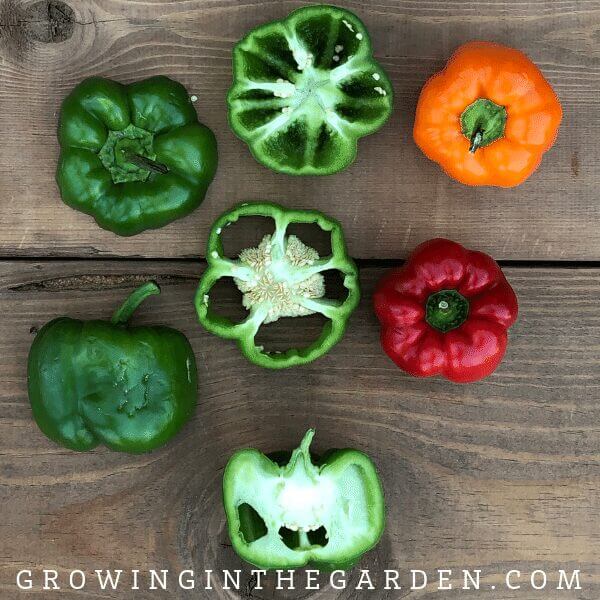
What does a bell pepper look like?
Bell peppers are large bell-shaped peppers. They range from 4 inches up to 8 inches for the largest peppers. The colors of bell peppers cover the rainbow, ranging from green, red, yellow, orange and even purple, depending on the variety.
What does a bell pepper taste like?
Similarly to the mini bell pepper, bell peppers of different colors have different flavors. Green bell peppers are the least ripe or sweet. As the bell pepper ripens from green to red, then yellow, and finally orange, the sweetness and flavor increase. The flavor of a purple pepper can be compared to a green pepper. If left on the plant longer, the purple pepper will normally ripen to yellow and then orange.
How hot is a bell pepper?
SHU (Scoville Heat Units): 0
#3: banana pepper
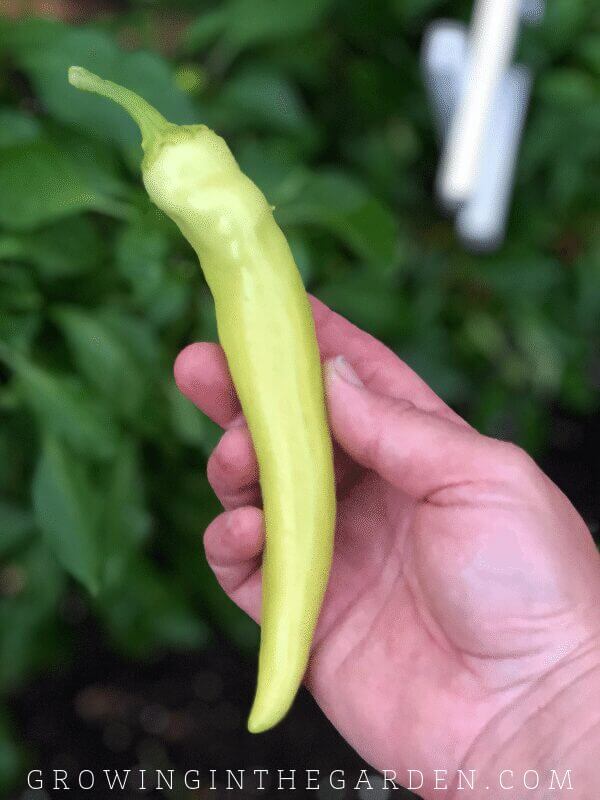
What does a banana pepper look like?
Banana peppers are medium-sized peppers, 4 to 6 inches long. They are usually yellow or green but can ripen to orange or red.
What does a banana pepper taste like?
Mild, almost no heat. A little bit sweet and tangy taste.
How hot is a banana pepper?
SHU (Scoville Heat Units): 0 – 500
#4: Carmen pepper
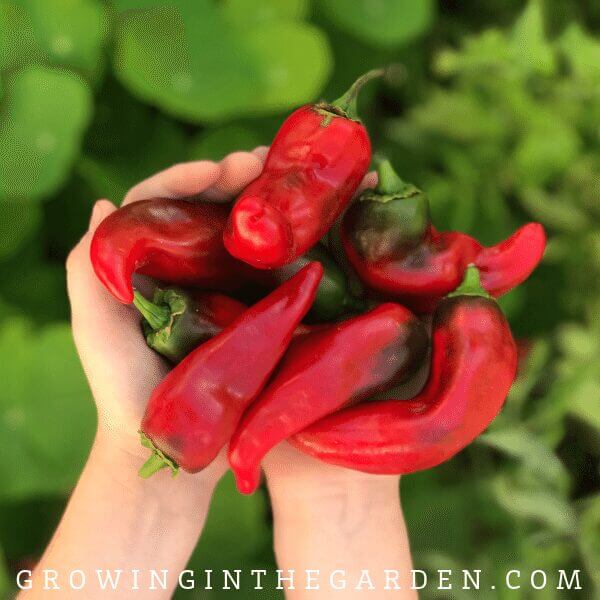
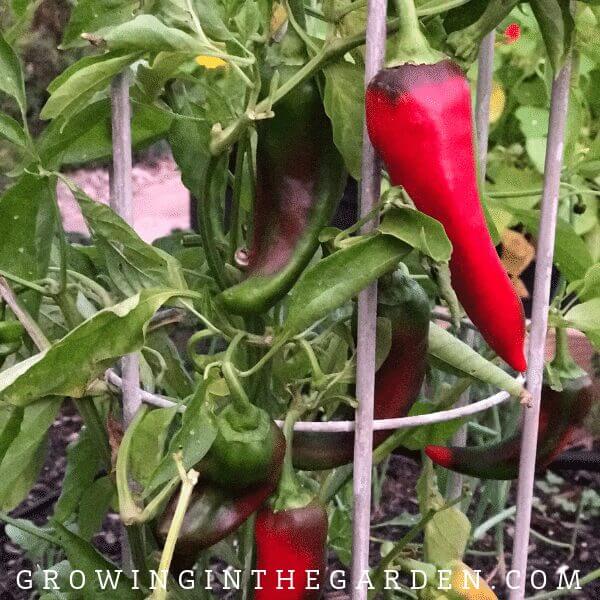
Carmen peppers are a bull-horn-shaped pepper about 6 inches long and 2 inches wide. For the best flavor, pick when peppers are a deep red color. Thick-walled and meaty.
What does a Carmen pepper taste like?
Carmen peppers are a sweet-tasting type of Italian pepper that tastes sweet and has little to no heat. They are delicious roasted.
How hot is a Carmen pepper?
SHU (Scoville Heat Units): 0 – 500
#5: pepperoncini
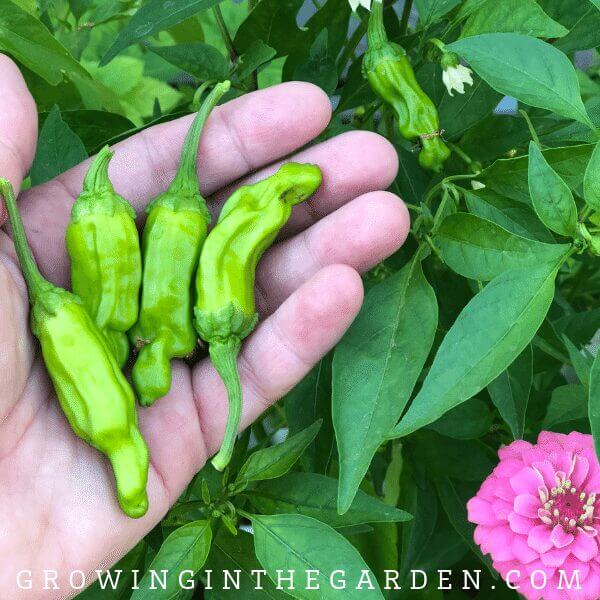
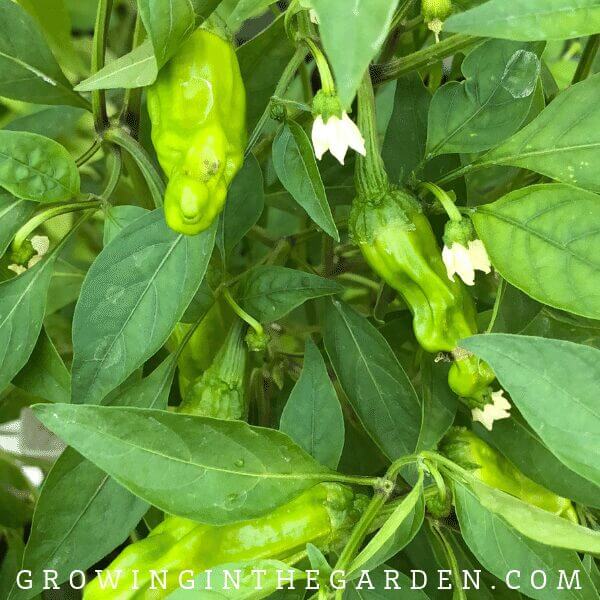
What does a pepperoncini pepper look like?
Pepperoncini peppers are thin-walled 2 to 3-inch tapered peppers, most often harvested when green, although they ripen to red on the plant.
What does a pepperoncini pepper taste like?
Pepperoncini peppers are most often pickled and have a tangy, sweet heat. Raw pepperoncini peppers have a mild, sweet heat.
How hot is a pepperoncini pepper?
SHU (Scoville Heat Units): 100 – 500
If you like this heat range, you may want to try Cherry peppers. Cherry peppers, also known as pimento peppers, are small, round, and vibrant peppers that resemble cherries in size and shape. They range from mild to moderately hot, with a Scoville Heat Unit (SHU) rating between 100 and 500 for sweet varieties and up to 5,000 SHU for spicier types. Their thick, crisp walls make them perfect for pickling, stuffing, or adding to salads and charcuterie boards.
Cherry peppers are commonly found in red, though green and yellow varieties also exist. Sweet cherry peppers are particularly popular for their mildly tangy flavor, while the spicier ones bring a gentle kick to dishes. They’re easy to grow and thrive in warm climates.
#6: Anaheim pepper
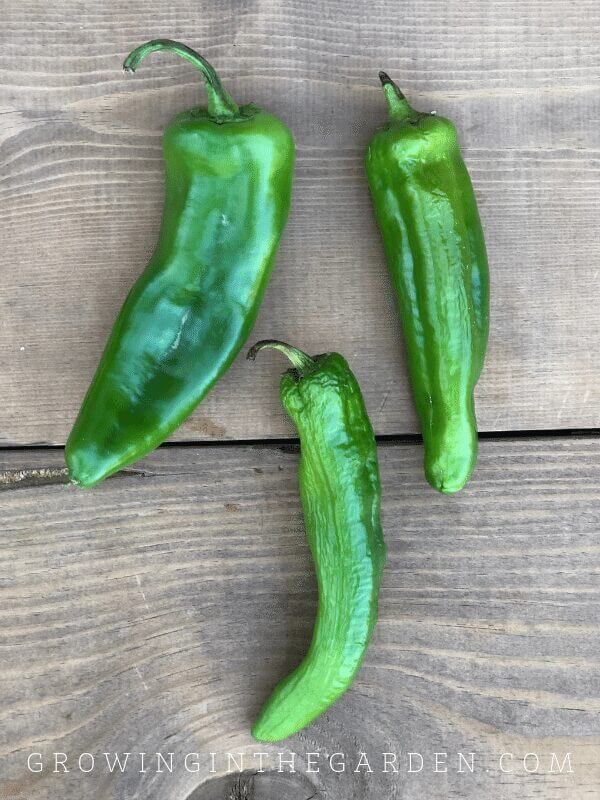
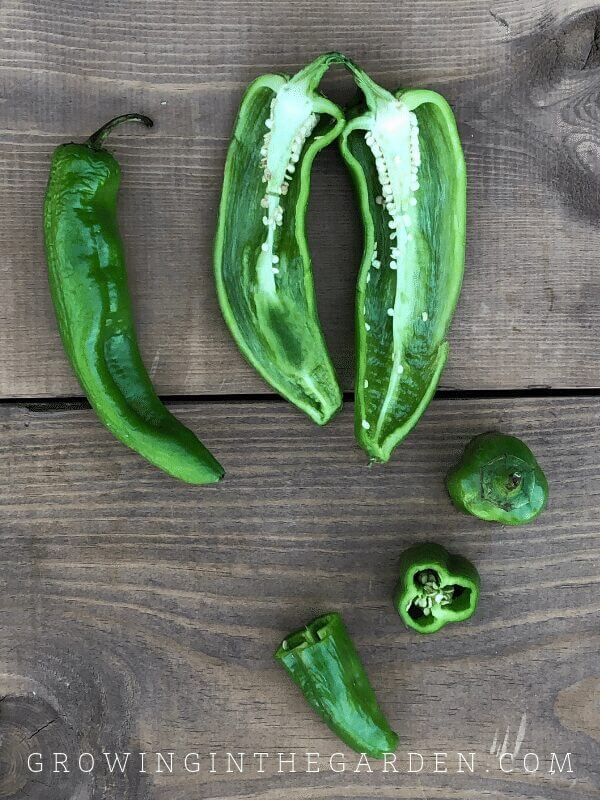
What does an Anaheim pepper look like?
Anaheim peppers are medium-sized peppers about 6-10 inches long. They ripen from green to red.
What does an Anaheim pepper taste like?
Milder than a jalapeño. One of the most common peppers – mild flavor and heat. Favorite for roasting and chile rellenos.
How hot is an Anaheim pepper?
SHU (Scoville Heat Units): 500 – 2500
#7: poblano pepper
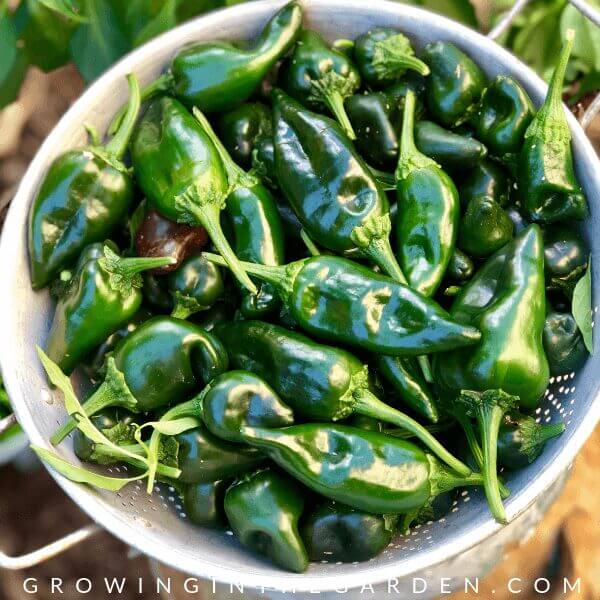
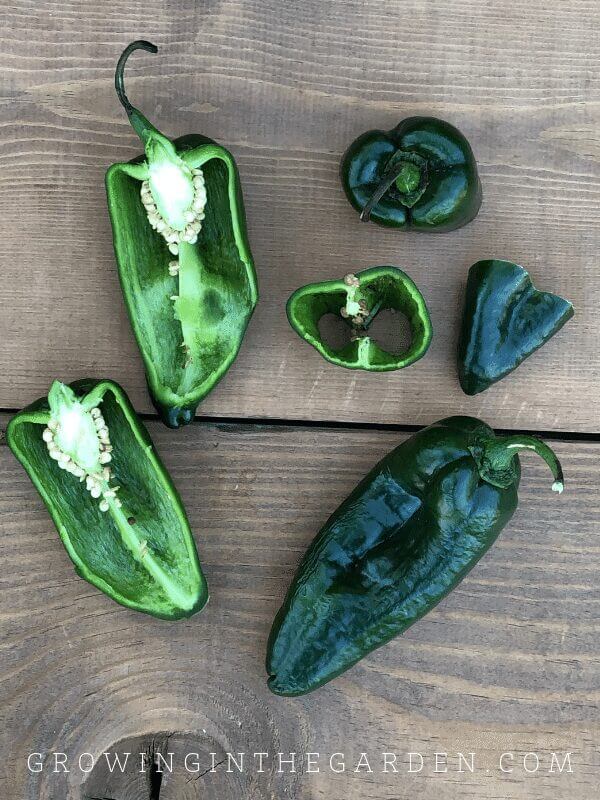
What does a poblano pepper look like?
Poblano peppers are thick-walled and heart-shaped. The peppers are 3 to 6 inches long and very dark green in color. Learn more about how to grow poblano peppers in this guide.
What does a poblano pepper taste like?
Poblano peppers are mild with just a bit of heat and earthy tasting. They are often roasted and peeled. Dried poblano peppers are called ancho chilis.
How hot is a poblano pepper?
SHU (Scoville Heat Units): 1,000 – 2,000
#8: Hatch pepper
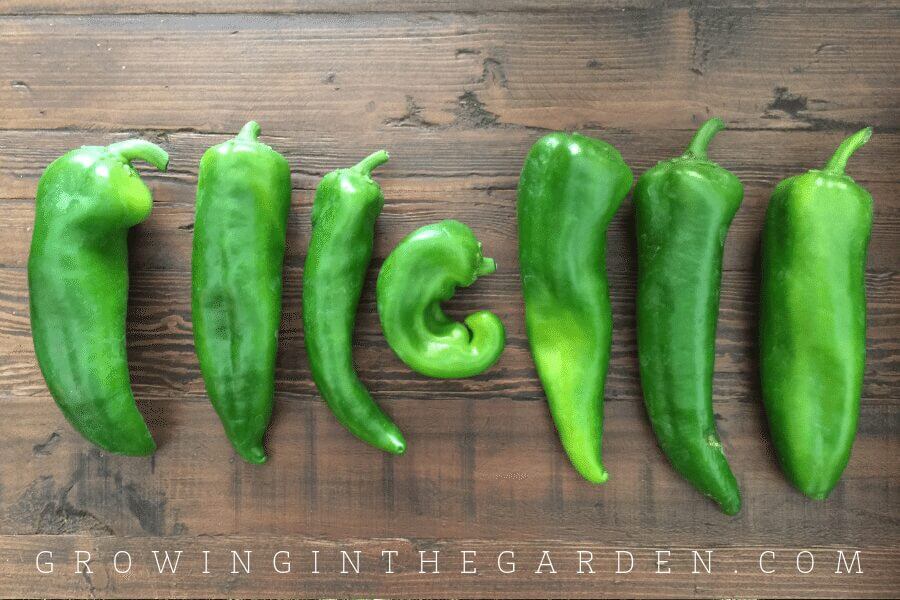
What does a Hatch chili pepper look like?
Hatch chili peppers are very similar to the Anaheim pepper. They have an elongated shape and range from 6 to 10 inches long. Hatch chilis most often refers to the type of chili grown in Hatch, New Mexico.
What does a Hatch chili pepper taste like?
Similar taste to Anaheim pepper; earthy flavor with varying levels of heat depending on ripeness.
How hot is a Hatch chili pepper?
SHU (Scoville Heat Units): 1,000 – 8,000
#9: jalapeño pepper
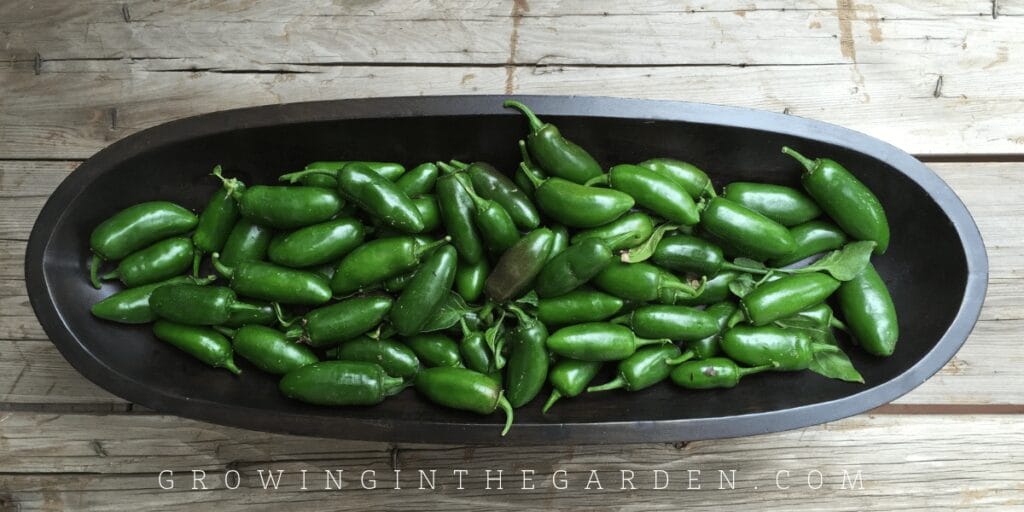
What does a jalapeño pepper look like?
Jalapeño peppers are thick-walled, medium-sized peppers. Most are 2-3 inches long, but some jalapeños are as long as 6 inches. They are usually harvested when green but ripen to red.
What does a jalapeño pepper taste like?
When jalapeños are left to ripen to red on the vine, the flavor is less hot and sweeter than the green ones. Jalapeño peppers are thought by many to be just the right amount of heat. The peppers are hot, but not uncomfortably so. Try them in these irresistible bacon-wrapped jalepeño poppers.
How hot is a jalapeño pepper?
SHU (Scoville Heat Units): 2,500 – 6,000

Looking for a great way to use your fresh jalapeños? This Pomegranate Jalapeño Cream Cheese Dip is a family favorite.
#10: Fresno pepper
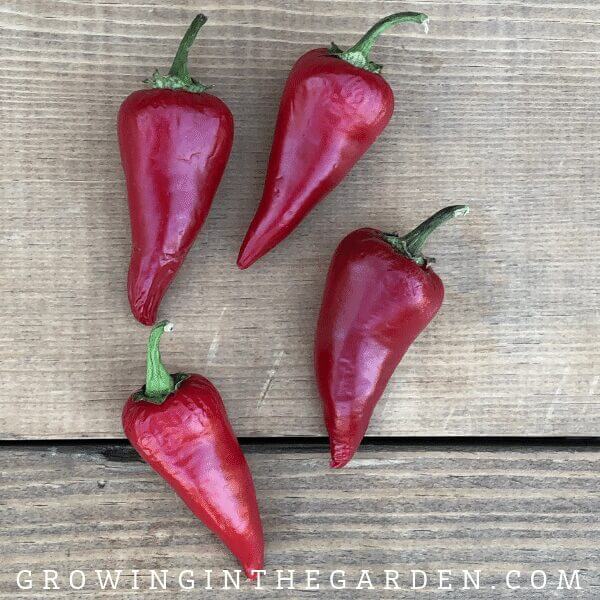
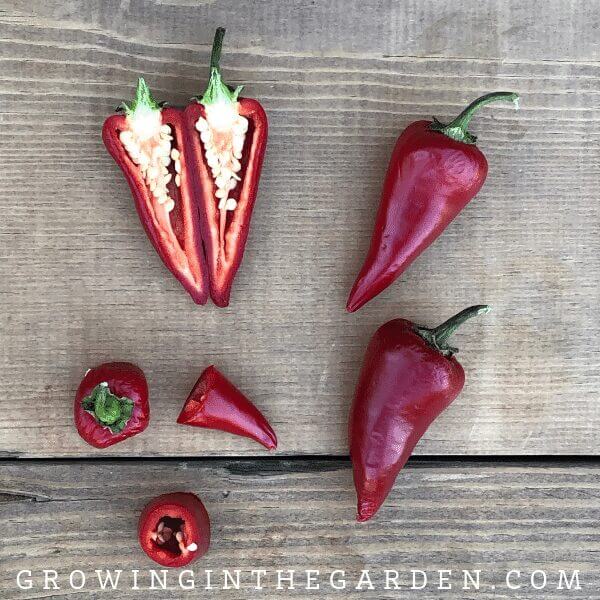
What does a Fresno pepper look like?
A Fresno pepper is about 2 to 3 inches long, slightly curved, with smooth skin. As it matures, it changes from green to a deep red. It has thinner walls than a jalapeño.
What does a Fresno pepper taste like?
Medium hot and slightly sweet. When green, a Fresno pepper looks and tastes similar to a jalapeño. As the pepper matures, it turns red and develops a smokier and fruitier taste that is slightly hotter than a jalapeño.
How hot is a Fresno pepper?
Scoville heat units (SHU): 2,500 – 10,000
#11: Jaloro pepper
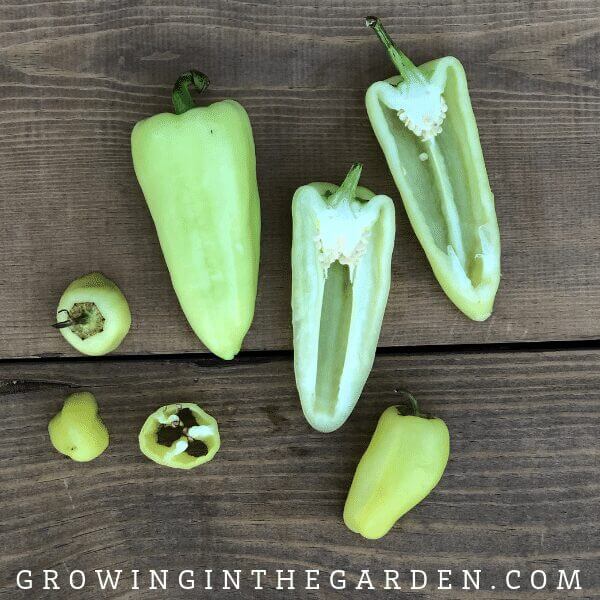
What does a Jaloro pepper look like?
Jaloro (sometimes called caloro) peppers are a thick-walled hybrid of the jalapeño and look like a yellow jalapeño. Most are 2-3 inches long, but some are as long as 6 inches. The Jaloro pepper turns red if left on the vine longer.
What does a Jaloro pepper taste like?
The Jaloro pepper tastes like a fruitier version of a jalapeño.
How hot is a Jaloro pepper?
SHU (Scoville Heat Units): 5,000
#12: Serrano pepper
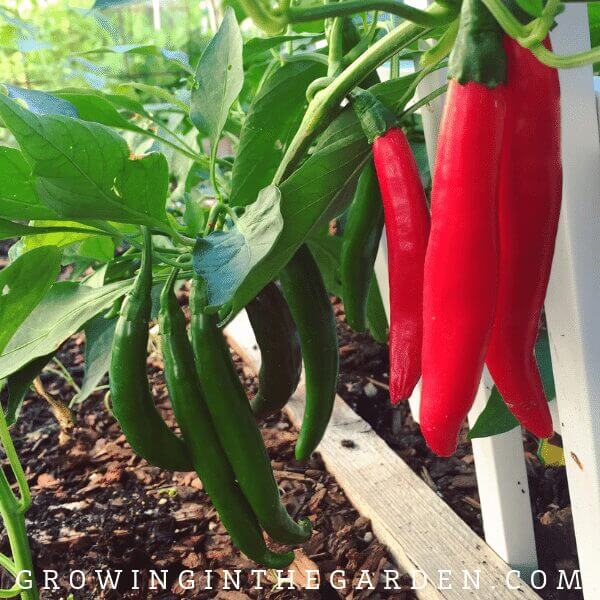
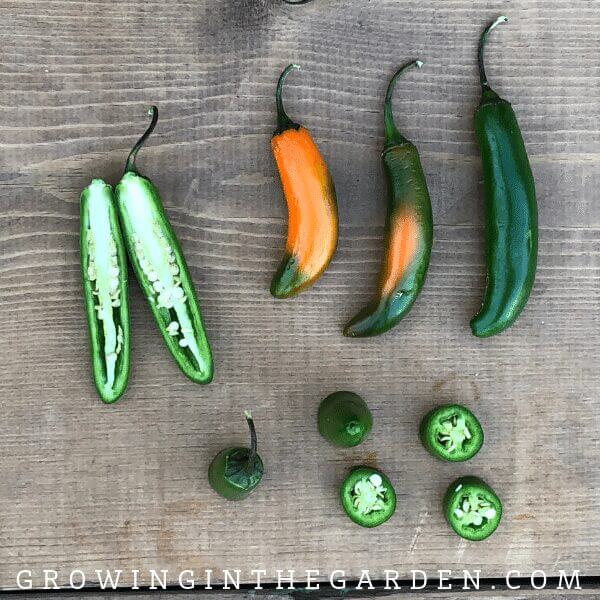
What does a Serrano pepper look like?
Serrano peppers are smaller than jalapeños. They start green and ripen to orange and finally red. These peppers are 2-4 inches long and about 1/2 inch wide. Serrano pepper plants are easy to grow and productive. I’ve had plants last for several years in the garden, producing hundreds of peppers each year.
What does a Serrano pepper taste like?
Fresh flavor but hotter than a jalapeño. Adds a spicy kick to salsa. Delicious roasted or fresh.
How hot is a Serrano pepper?
SHU (Scoville Heat Units): 10,000 – 23,000
Looking for slightly more heat? Cayenne peppers are a little hotter than Serranos. Cayenne peppers are slender, elongated chili peppers known for their fiery heat and versatility in cooking. They typically measure between 30,000 and 50,000 Scoville Heat Units (SHU), placing them in the medium-hot range of chili peppers. These peppers are usually 4 to 6 inches (10 to 15 cm) long, with a bright red color when fully mature.
Cayenne peppers are commonly dried and ground into a fine powder, which is widely used as a spice to add heat to dishes. They’re also used fresh, dried, or as a key ingredient in hot sauces. Native to Central and South America, cayenne peppers thrive in warm climates and are easy to grow in home gardens. Their bold heat and flavor make them a popular choice for spicing up soups, stews, marinades, and even beverages like detox teas.
#13: Thai chili pepper
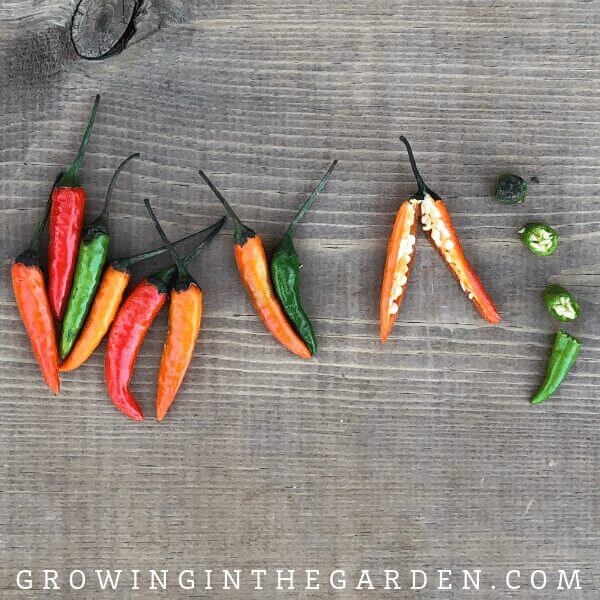
What does a Thai chili pepper look like?
There are many varieties of Thai chilis, but they are often small-sized, thin-walled, tapered peppers that are 1-2 inches long. They are typically harvested when ripened to red, but they can be used at any time.
What does a Thai chili pepper taste like?
There are many different types of Thai chili peppers, and they range from hot to very hot.
How hot is a Thai chili pepper?
SHU (Scoville Heat Units): 50,000 – 100,000
#14: habanero pepper
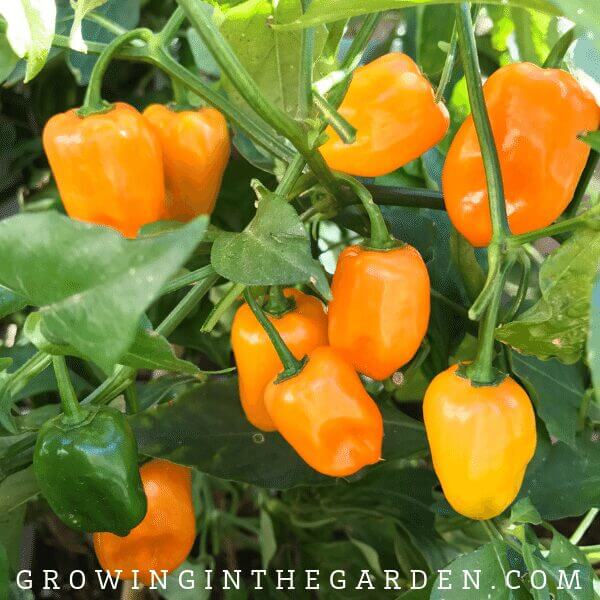
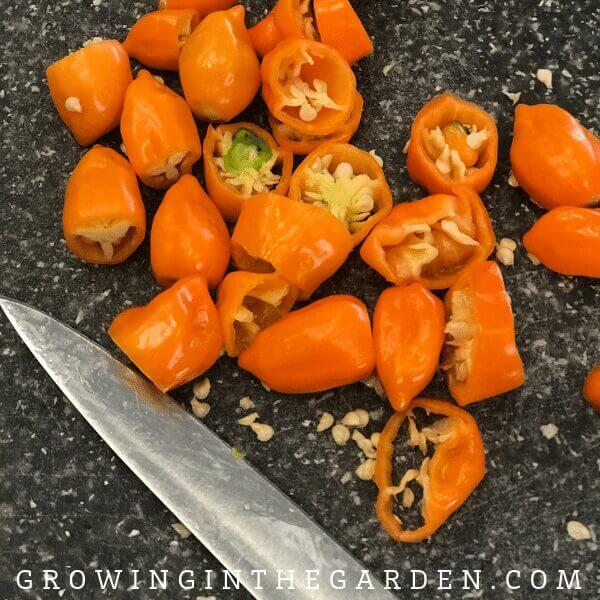
What does a habanero pepper look like?
Habanero peppers are thin-walled, waxy peppers about 2 inches long and 1 to 2 inches wide. Their color ranges from yellow to orange to red depending on when they are harvested.
What does a habanero pepper taste like?
Good mix of heat and flavor. Very hot but also a little citrus flavor.
How hot is a habanero pepper?
SHU (Scoville Heat Units): 200,000 – 300,000
If you like this heat range, you may want to try its relative, the Scotch Bonnet pepper. The Scotch Bonnet pepper is known for its intense heat and fruity, tropical flavor. It typically measures between 100,000 and 350,000 Scoville Heat Units (SHU). Its distinct sweetness and heat make it a staple in Caribbean cuisine, often used in jerk seasoning, hot sauces, and curries. While fiery, the Scotch Bonnet’s flavor adds a unique depth to dishes, balancing the spice with a hint of fruitiness.
#15: Bhut Jolokia
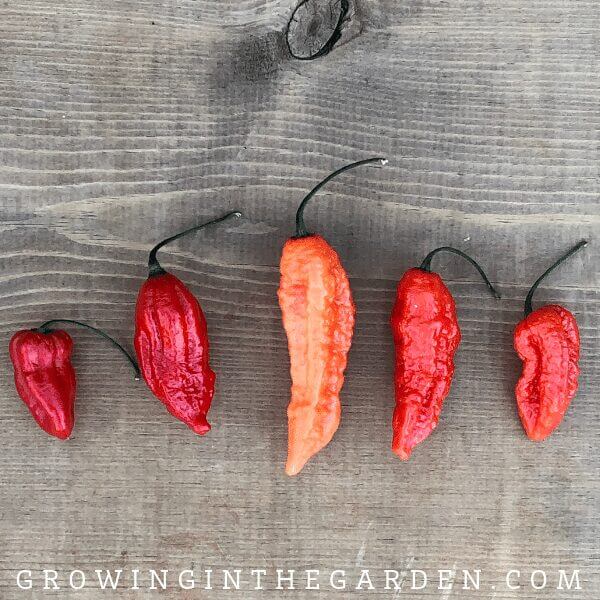
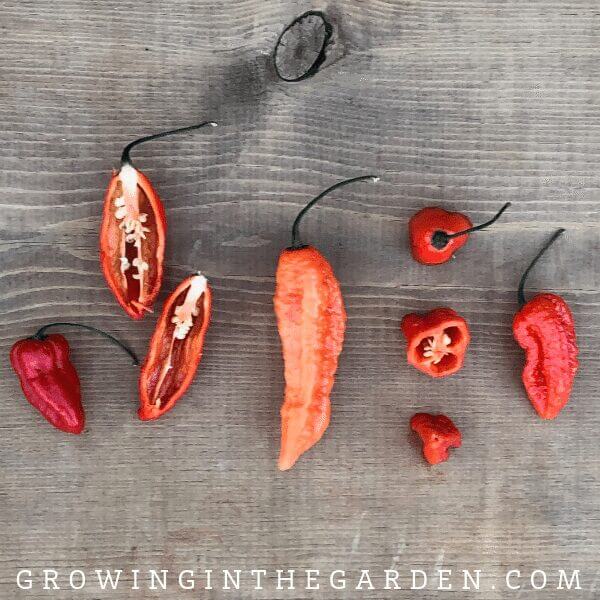
What does a Bhut Jolokia (ghost pepper) look like?
Bhut Jolokia peppers are 2 to 3 inches long, and range from red and orange to purple and brown. They have thin, dented skin that tears easily.
What does a Bhut Jolokia (ghost pepper) taste like?
The flavor comes in stages – first a very sweet chili flavor, followed by intense heat that intensifies for about 15 minutes. Use caution when handling and using.
How hot is a Bhut Jolokia (ghost pepper)?
SHU (Scoville Heat Units): 850,000 – 1,463,700
#16 Chiltepin
Chiltepin peppers are chili peppers native to Mexico and Central America. They have an intense heat and are often used in Mexican cuisine, such as sauces, salsas, or stews. If you’re brave, try one raw. It’s HOT!!!

What does a Chiltepin look like?
Chiltepin is a small, round chile pepper with bright red skin and a unique smoky flavor. When fully ripe, it ranges from light green to bright red.
What does a Chiltepin taste like?
Chiltepins have a distinct flavor ranging from fruity and smoky notes to intense heat.
How hot is a Chiltepin?
SHU (Scoville Heat Units): 50,000 to 100,000
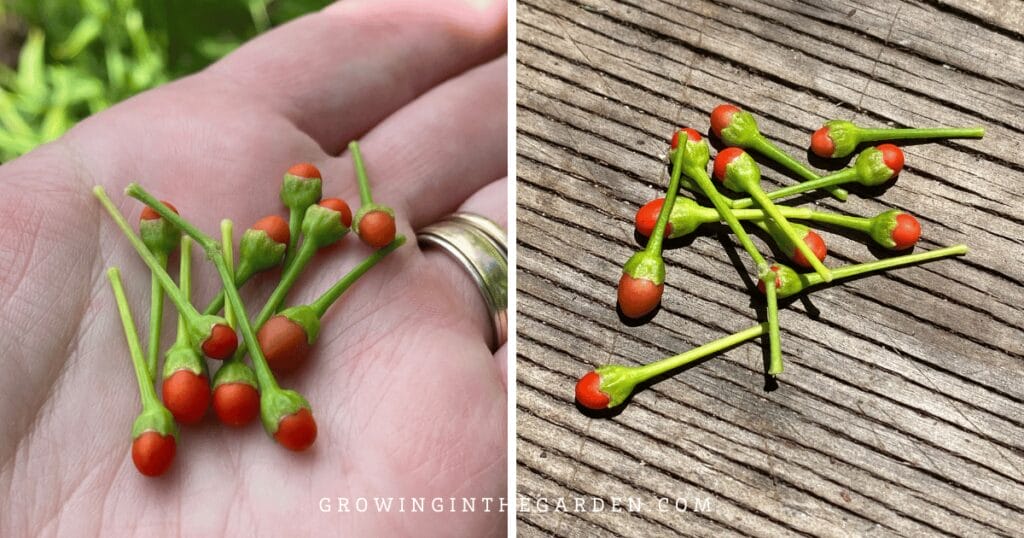
Which peppers are considered the hottest in the world?
If you’re up for a fiery challenge, these peppers are the hottest in the world, as measured by their Scoville Heat Units (SHU). Cultivating these peppers requires patience, warm temperatures, and a lot of care, but the reward is a crop that can pack an unbelievable punch.
As a mom to teenage boys who purchased Carolina Reaper peppers online, I can attest to their heat. I don’t recommend trying them unless you don’t mind the side effects (vomiting and pain while they are in your system until they work all the way through!). Always handle the fruit carefully—wear gloves and avoid touching your face to prevent irritation!
- Carolina Reaper (2.2 Million SHU)
Officially recognized as the hottest pepper in the world, the Carolina Reaper boasts an average of 1.6 million SHU, with some reaching up to 2.2 million SHU. Developed in South Carolina, this pepper has a wrinkled, tail-like tip and delivers a slow-building but intense heat. Despite its ferocity, it also has a sweet and fruity flavor, making it popular in hot sauces and spice blends. - Dragon’s Breath (2.48 Million SHU)
Named for its searing heat, the Dragon’s Breath pepper is another contender for the title of hottest pepper. It was developed in the UK for medicinal purposes, as its oil has numbing properties. While not officially recognized as the hottest, it reportedly reaches up to 2.48 million SHU. - Pepper X (3.18 Million SHU)
Created by the same grower behind the Carolina Reaper, Pepper X is an unofficial record holder with a staggering 3.18 million SHU. This pepper is still being verified for its heat but has already gained fame among pepper enthusiasts for its excruciating spiciness and complex flavor profile.
Tips for Growing Extreme Hot Peppers:
- Warm Growing Conditions: Hot peppers thrive in consistent warmth, with temperatures above 70°F (21°C).
- Long Growing Season: Start seeds indoors early, as these peppers require a long season to mature.
- Rich Soil: Amend soil with compost and a balanced fertilizer to support growth.
- Patience Required: Extreme heat levels often require the peppers to reach full maturity.
How do I know when peppers are ripe and ready to harvest?
The best time to harvest peppers depends on the variety you’re growing and your taste preference. Most peppers change color as they ripen—commonly turning from green to red, yellow, orange, or another mature shade. For example, bell peppers can be picked green for a milder flavor or left to turn red for a sweeter taste. Hot peppers like jalapeños develop corking (small white lines on their skin) as a sign of ripeness, while others, like habaneros, are best harvested when they reach their full, vibrant color.
To check for ripeness, gently squeeze the pepper—it should feel firm and solid. If you’re unsure, taste testing can help determine if you like the flavor. Peppers will continue producing if conditions remain favorable, so harvesting regularly encourages new growth.

Knowing how and when to prune peppers in mild winter climates is essential to keeping them healthy and productive for many years. Learn how in this blog post.

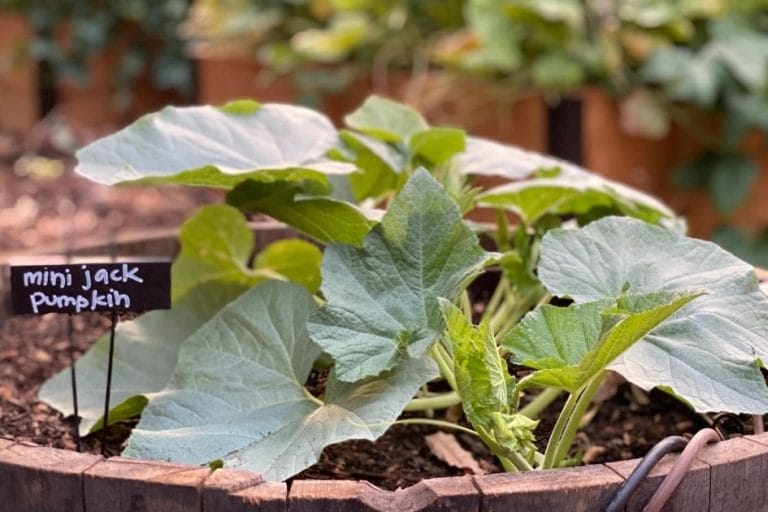



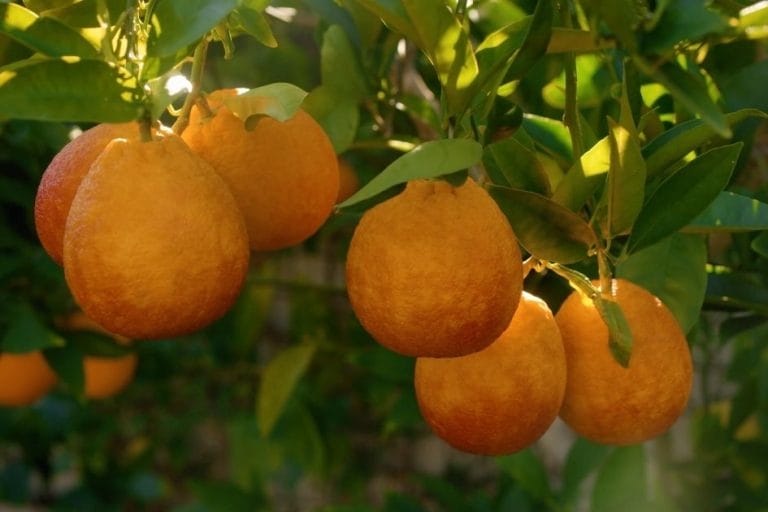
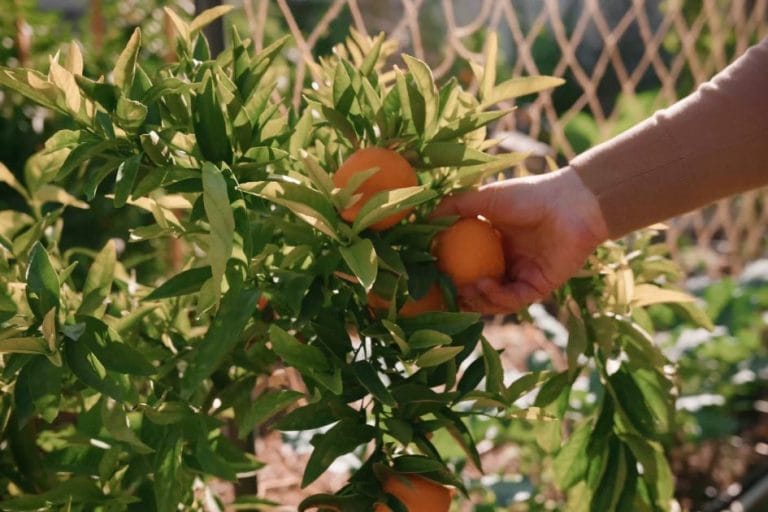
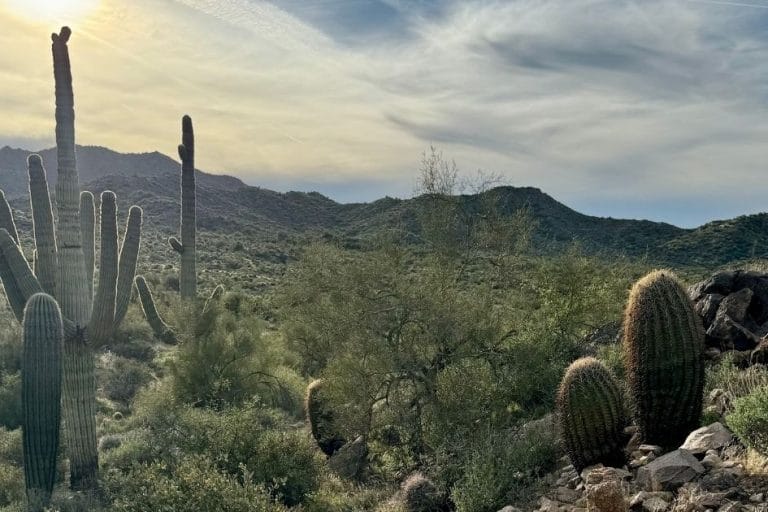
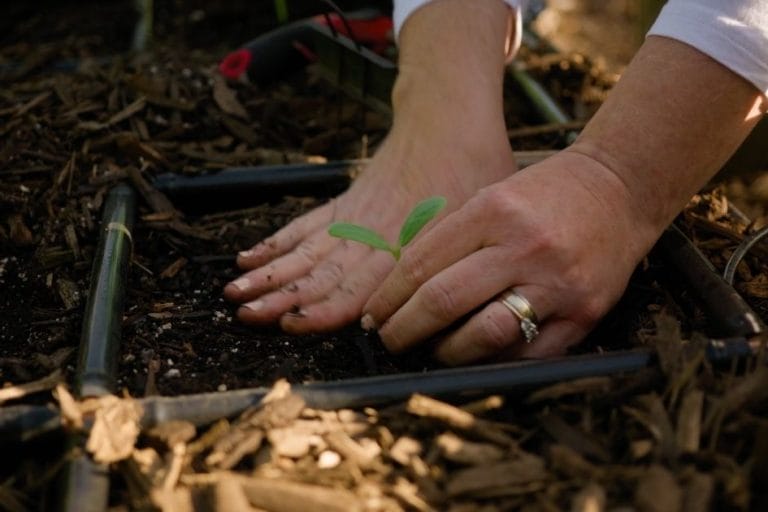
Angela, I’ve grown about 12 bell pepper plants in the last 18 months here in Chandler and here are my problems: they NEVER get any bigger than 2 1/2 inches long, the walls are very thin and most end up getting a brown, withered blemish near the blossom ends, not ON the blossom end.
They are all in 10 gal grow pots and are watered automatically. I LOVE bell peppers but I want the big, thick bell peppers I get in the store. What am I doing wrong?
Just read Joyce’s comment on the problems that she has had with her bell peppers. With any pepper over watering can cause this problem …The soil or soil/ compost mix only needs to be moist & never drenched. Remember that peppers grow extremely well in dryer warm climates. Reduce the amount of peppers from the blossom stage to the fruit stage per plant. As most are aware pepper plants flower extremely productively. Once the peppers start to form feed the plant just once seasonally with a liquid based fertiliser. I use a liquid tomato fertiliser that is cheap as chips & is widely available at various outlets.
Do you recognize a NEW black pepper about 4in/4cm long, HOT, called Zuk Head???? (name faded on plant label, so not sure of correct name) Brought as baby plant at a garden show, and was told it was a new variety this year, seeds came from a recognized seedsman such as Suttons etc. although cannot remember which brand.
Hi, I’m not familiar with that type. It does sound interesting!